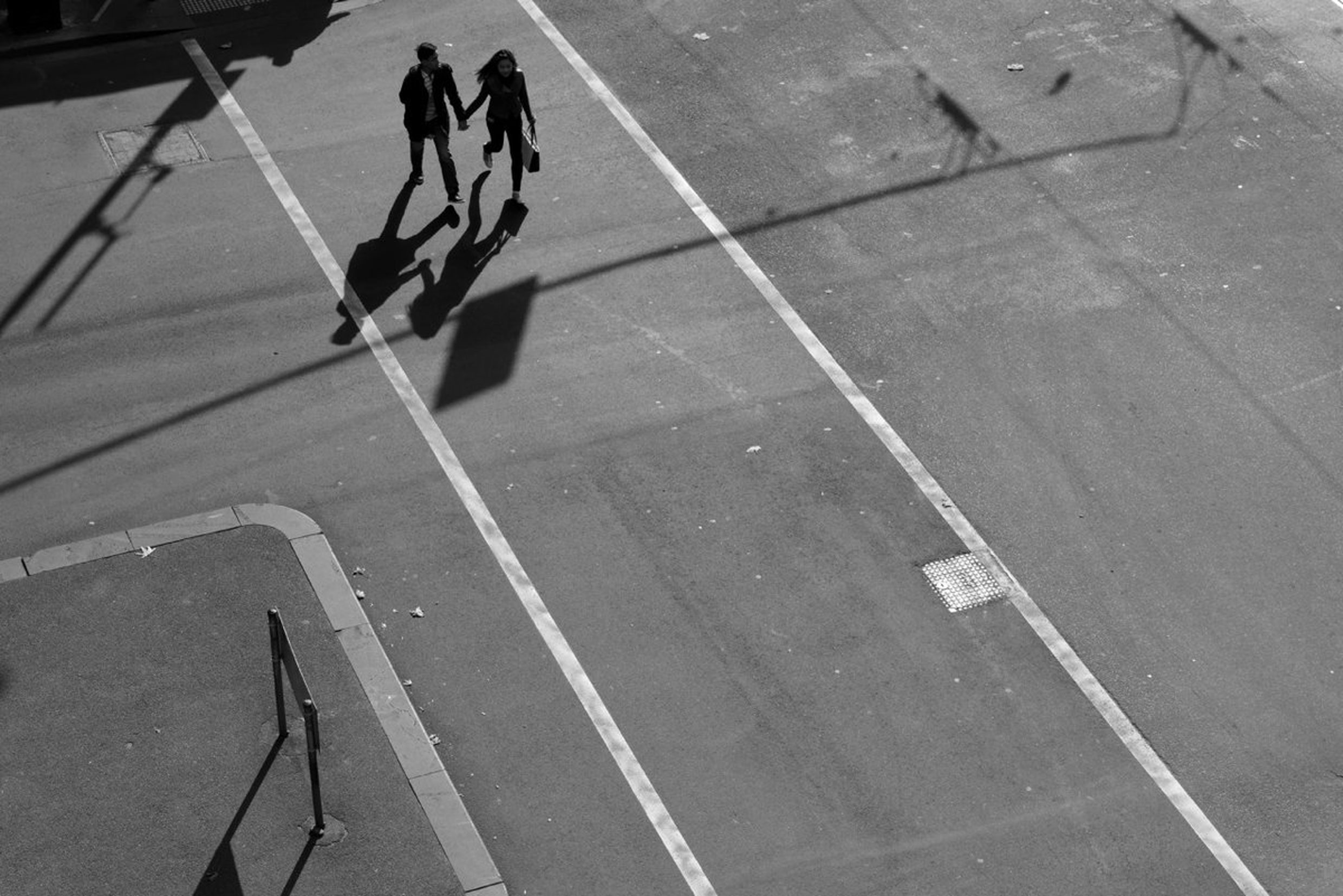Crime investigation is an industry ripe for disruption. Shows like “The First 48” give us a glimpse into how ineffective lie detector tests and interviews can be when trying to place someone at the scene of a crime. Forensics and DNA testing show us how many people the justice system wrongfully convicts. Interestingly, though, there’s a group of crime investigators making a strong push toward the top; one’s a black box that sits in your pocket and the other on your wrist.
Together, the iPhone and wearable devices bring data to the scene of the crime. They act as the “fly on the wall” before, during, and after a crime takes place.
Obviously, video evidence is the most incriminating evidence we can have. But, getting someone in plain sight isn’t always that easy. Luckily, our technology gives us a better context of the situation.
Step Counts are Side Effects
Fitbits and fitness trackers have our permission to peep on our privacy. But could they be a reliable witness? Well, why don’t you ask Richard Dabate, the husband, and prime suspect in the murder, of Connie Dabate?
At first, Richard’s story had no holes in it. An intruder clearly broke into their house, tied Richard to a chair, and struggled with Connie before murdering her. Sniffer dogs and gunshot residue tests both came back inconclusive.
Then, the prosecution got an idea. Richard’s story warranted Connie to walk no more than 125 feet (the distance between the garage and basement). However, Connie’s Fitbit showed that Connie had walked over 1,200 steps at the alleged time of the attack. Sounds a bit fishy, right?
Richard Dabate was charged with murder, tampering with evidence, and providing false statements, thanks to Fitbit evidence. Overall, it’s a big win for Fitbit and fitness trackers as key witnesses, showing the hidden abilities these devices offer.
Amazon Echo Pleads the Fifth
On the other hand, just because technology is present doesn’t mean it’s a reliable witness. According to an Arkansas hot tub murder, the Amazon Echo (who is the only witness) is providing no help.
Amazon claims the device has no audio recordings since the device only records when after hearing a “wake word”. Either this is an unfortunate truth, or Amazon doesn’t want to fess up.
The conspiracy theorist in me believes that Amazon isn’t giving in because it would prove the Echo is always recording. This would spur an entirely new debate on privacy issues. In their mind, they are playing a larger game of chess and they’d be losing their queen if they gave out this info.
Regardless, our technology devices are beginning to look like items in CLUE, giving us hints in the classic game of Whodunit. Little did you know, you had the candlestick in your pocket the whole time.
iPhone as a Black Box
The few unfortunate times that we hear of a plane crash, interest almost always revolves around finding the black box. To the average person, this may sound like some mystical item that tells all truth. In reality, it just records conversations…and isn’t even black.
The aerospace industry calls them “electronic flight data recorders”. They usually give investigators a glimpse into what went wrong before the crash. Even though black boxes are archaic technology compared to our phones, they are still very useful. So useful, that Apple has copied the idea without your knowledge.
Apple HQ knew that the iPhone was a data collecting device, gathering valuable insights into people’s lives. So, why not make it a black box for humans? With the iPhone always on and collecting data, they could effectively gather “evidence” leading up to technical difficulties, disasters, and foul play – just like the Airplane black box does.
I bet you never thought of it like that.
The iPhone stores valuable health data just like the Fitbit, which proved to be helpful already. The iPhone also has a responsive microphone, just like the Amazon Echo, which might record conversations so that Siri can appear when requested. Lastly, add in the ability to communicate via voice and text, capture video footage, etc… and you have the ultimate evidence collector.
There’s just one problem. What if the device is dropped in water, smashed to pieces, or burned to ash after the evidence is captured?
First, Apple is trying their best to create an indestructible device that isn’t affected by water, heat or electromagnetic pulses. Of course, everything breaks at some point.
So, that’s where their backup plan comes into play. Using RFID (radio-frequency identification) the iPhone can send a signal right before evidence is tampered with. In the past, RFID has been used for highway tolls, inventory management, badge entry, public transportation, and wireless transactions. But, your iPhone today can send information that isn’t “fixed”, that changes depending on the circumstances. Just like crime scene evidence.
While we haven’t necessarily seen this black box in action, it’s a capability that they are sitting on. In a sense, Apple has effectively put the ultimate Sherlock Holmes in everyone’s front pocket, solving crimes and promoting justice like never before.
The future of criminal justice
Movies like The Minority Report portray a future where “oracles” predict crimes before they occur. In real life, the government has employed a data collection and analysis agency known as Palantir Technologies. By spying on the public, they aim to stop terrorism and eventually crime altogether.
But, I don’t know if I want to live in a world where crime doesn’t exist and innocent mistakes could prove fatal to your future. I’d rather picture a future where our devices record enough real-time data to ensure criminals don’t ever get away.
With technology as the detectives, showing the judge and jury exactly what happened, perhaps the justice system can make a healthy transformation. The facts will be clear and indisputable, allowing the justice system to consider other variables such as intention and circumstance – before delivering the verdict.
Perhaps in this future, justice is served based on individual character, not a precedent set 40 years ago. White collar criminals get what they truly deserve, not a special treatment.
Evil will always exist. Nature needs a balance of good and evil.
So, instead of thinking about “how things should be”, our focus should shift toward “how things are”. With this mindset, we can address the current state of crime and justice to make changes today. Not depending on a fantasy where evil vanishes for good.
The idea of “what is” vs. “what should be” exists in all areas of our lives.
“What is” and “what should be”
When we focus our attention on “what should be”, our thoughts are centered on something that is missing. An idea isn’t in practice, there aren’t muscles where they should be, or the number in our bank account isn’t quite there.
Unfortunately, “what should be” is never satisfied because as we begin to find what we thought was missing, we discover that something else is missing too, and then another thing. And this process goes on forever.
Now, this isn’t to say that goals aren’t good. But, redirecting your attention on “what is” as you work toward your goals will allow you to notice the positive things that are present.
In other words, value what you have, not what you are missing, and you’ll never feel empty.
This can be a hard idea to live by when it comes to technology since its advancement is so fast. For that reason, I created Quick Theories – a brief, weekly newsletter with my thoughts on modern technology and its effects on your future – helping you understand “what is” going on now.
If you enjoyed this article and would like to receive one like it every week, sign up here: quicktheories.com



Hmmm, well if there was a struggle the FitBit could have simply recorded the motion of the struggle, not necessarily steps, I don’t think that’s conclusive evidence and has reasonable doubt in my mind. While it is branded as a step counter, it’s really an impulse counter as evidenced by people pushing the step counts in creative ways when there’s step challenges. Things like putting them on ceiling fans, attaching to drills and the like.
Of course that said, that wasn’t the sole evidence and looking further into the case, I see there are other inconsistencies, so it helped investigators explore and find other corroborating evidence that together paints a picture. Sad story.
If tech can help the justice system be more accurate, that’s cool, but the concern is over things being misinterpreted, but that isn’t a new problem, we just have newer tech data/syntax. Thanks for highlighting this.
You definitely dropped the ball Qu. Your low comment count agrees.
I waited to comment hoping someone else might.
Oh well! Here it goes.
“What is” compared to “what should be” is the classic comparison in so many ways.
When I bought my last house, both realtors, both bankers, the seller, and the title agent, (all Millennials) sat down at closing with laptops and printers, agreeing on the same numbers in less than two minutes.
The baby boomer who built my house, (and he is an excellent craftsman) sat down with a notebook, a pencil, and a calculator, taking almost 30 minutes to produce the exact same numbers the millennials produced with their technology.
The craftsman is well know for his skill. That’s why I hired him to build my house.
The bankers, the realtors, and the title agent, are also know for their skills.
“What is” and “what should be” both balance each other out.
They are both vital.